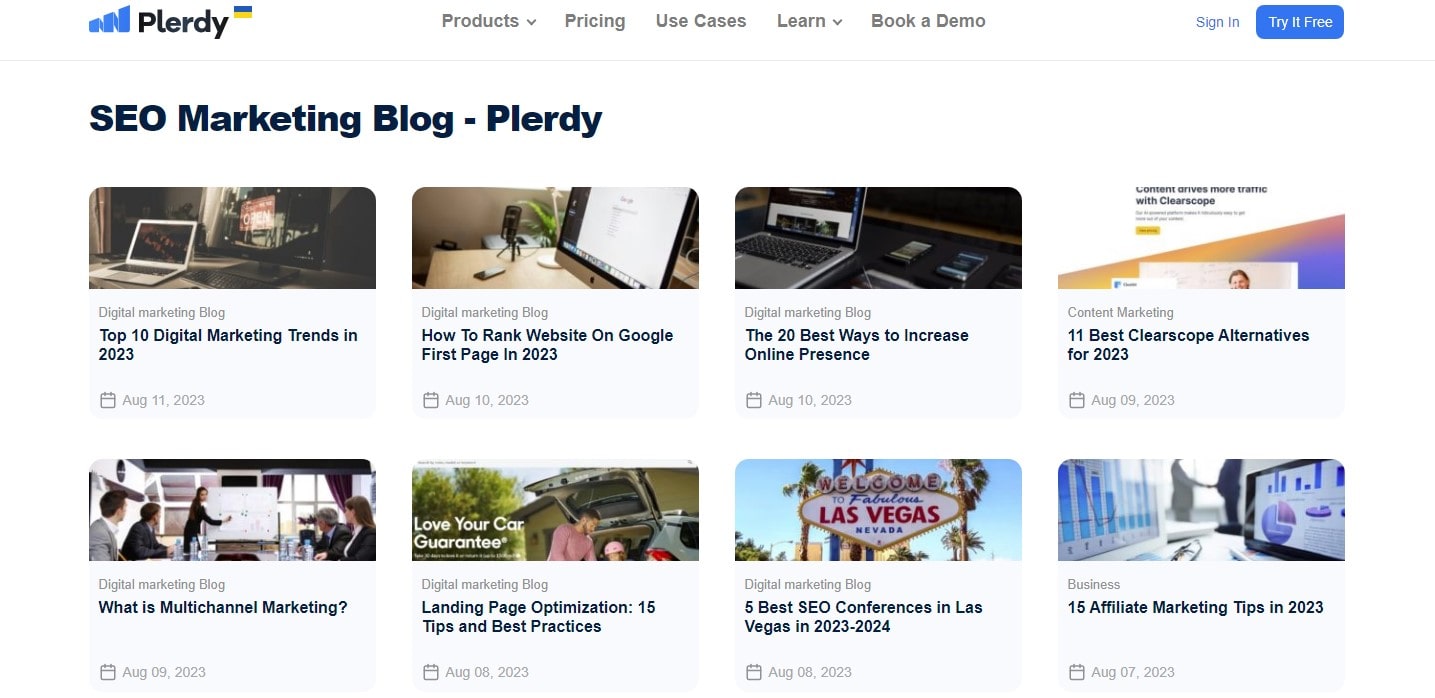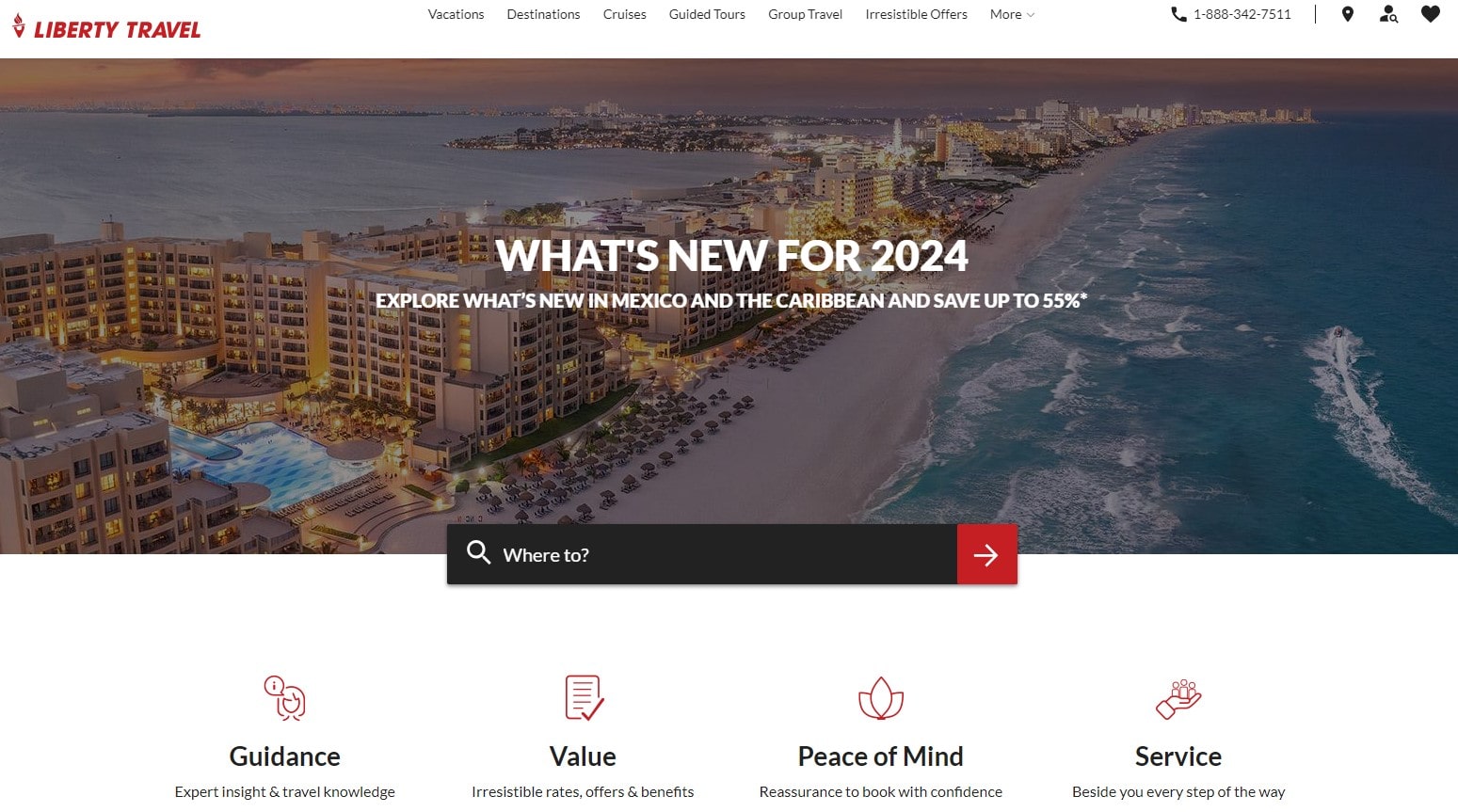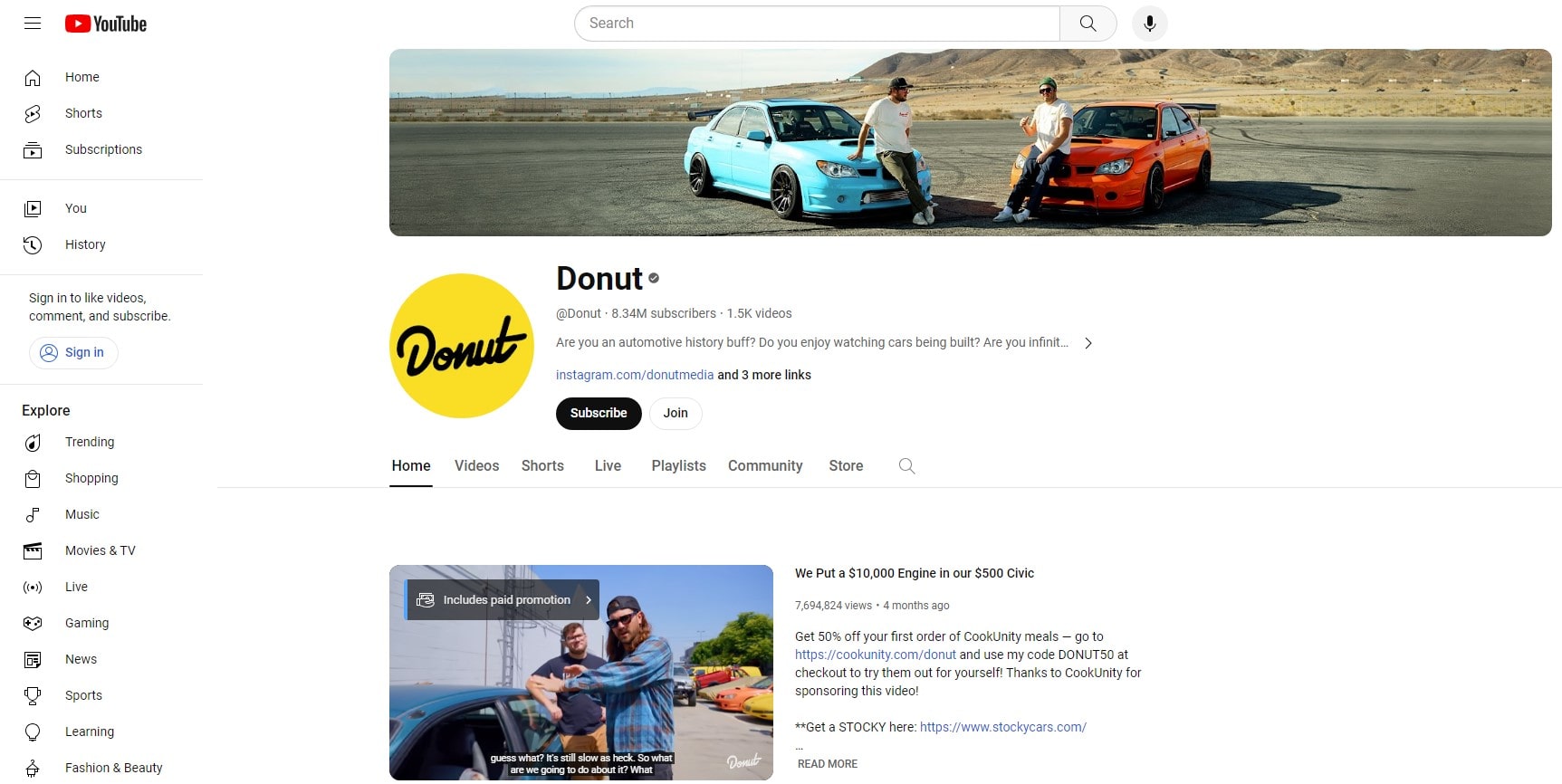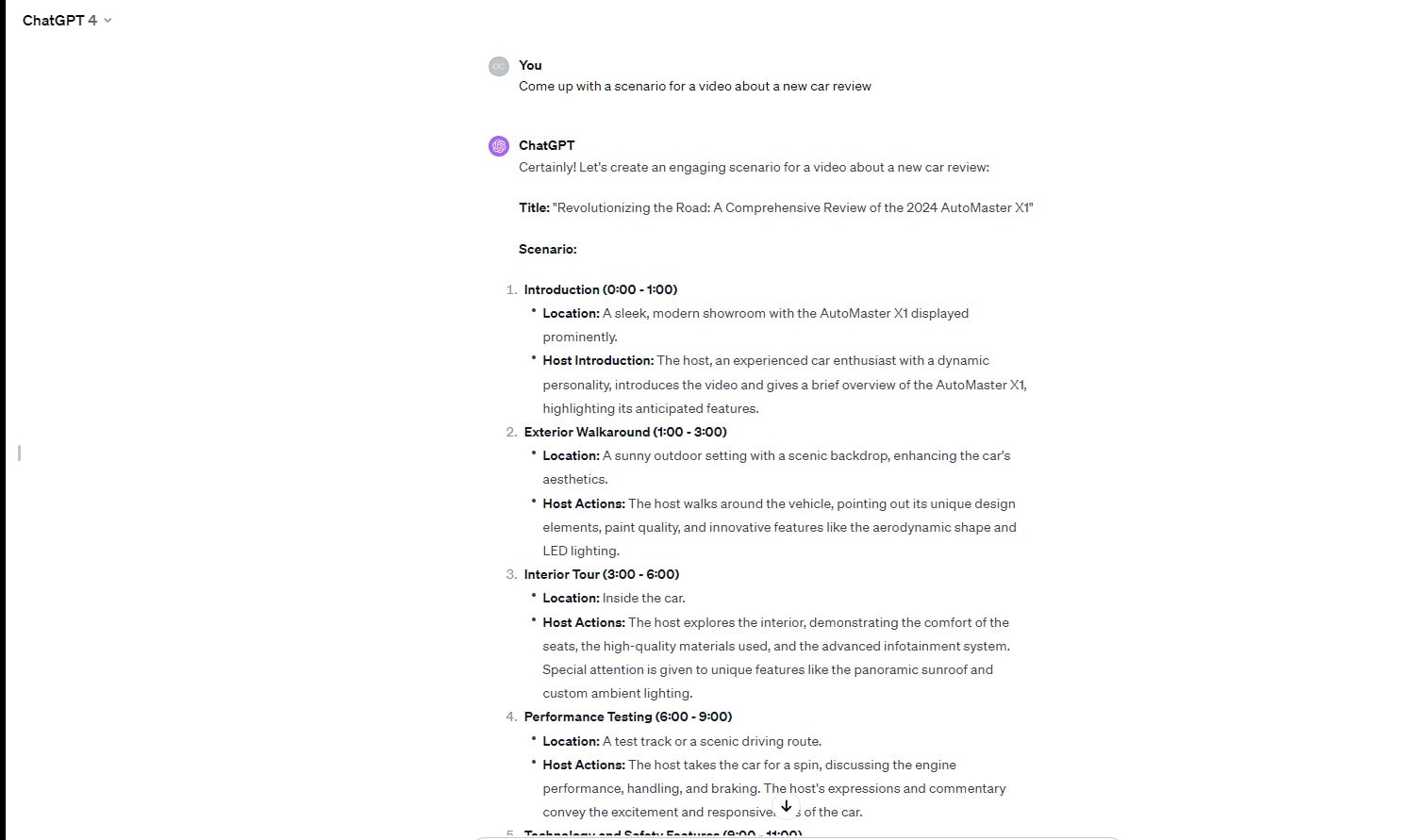In the bustling digital universe, content reigns supreme. This is not just a catchy phrase but a fundamental truth in the world of digital marketing. Digital content, the lifeblood of online marketing, serves as a vital bridge connecting brands with their audiences. Its importance can’t be overstated, especially in sectors like e-commerce, where engaging content can transform casual browsers into loyal customers.
Consider this:
- In the healthcare industry, informative digital content educates and builds trust.
- In the fashion world, visually compelling content creates trends and drives sales.
- For tech companies, content that demystifies complex products can be a game-changer.
The essence of effective digital marketing lies in crafting content that resonates with its audience. It’s about striking the right chord with well-researched, SEO-optimized, and audience-tailored content. Here, marketing isn’t just about selling; it’s about telling a story that aligns with your audience’s needs and interests.

But how do you gauge the impact of your digital content? This is where tools like Plerdy come into play. By analyzing user behavior, Plerdy helps in fine-tuning your digital marketing strategy. Whether it’s about increasing conversion rates, improving usability, or optimizing your SEO data, Plerdy provides insights that can elevate your content strategy.
In summary, digital content is not just words and images; it’s a strategic asset in your digital marketing toolkit. It’s about creating connections, fostering relationships, and driving growth in this ever-evolving digital landscape.
Definition of Digital Content
Digital content, the lifeblood of the digital era, encompasses a vast array of online materials designed primarily for consumption, interaction, and sharing. At its core, this content bridges the gap between brands and audiences, providing value, insight, and engagement opportunities. When merged with effective marketing strategies, digital content propels businesses into the limelight, allowing them to foster strong connections and drive conversions.
Specific niches in the digital content landscape include:
- E-commerce: Product descriptions, reviews, and video demonstrations
- Healthcare: Informative articles, patient testimonials, and how-to guides
- Finance: Infographics, podcasts, and explainer videos
Mastering the art of crafting compelling digital content requires an in-depth understanding of both audience needs and the evolving digital landscape. Embracing the latest trends in content creation and distribution—be it through interactive webinars in the tech sector or visually captivating Instagram stories in the fashion industry—ensures that a brand remains fresh and relevant.
Moreover, intertwining marketing strategies with content creation amplifies a brand’s voice in the vast digital space. Tailoring content to suit specific platforms—like short, engaging TikTok clips or detailed LinkedIn articles—optimizes reach and impact. However, it’s vital to ensure that the essence of the brand remains consistent across all platforms.
In a nutshell, digital content, when infused with strategic marketing, not only educates and entertains but also builds trust and credibility. By understanding the nuances of different niches and platforms, businesses can craft impactful narratives that resonate with their target audience and, in turn, elevate their brand in the competitive digital marketplace.
Common Formats

In the expansive landscape of digital content, a myriad of formats stands out, each tailored to convey messages effectively while aligning with marketing goals. The evolution of technology and user preferences continuously shapes the tools and mediums businesses leverage to connect with their audiences. Recognizing these formats and integrating them into a marketing blueprint can significantly enhance a brand’s online engagement.
Some standout formats in the digital content space include:
- Websites and Blogs: Cornerstones for brands, these platforms house in-depth articles, case studies, and narratives—think fitness trainers sharing workout regimes or tech startups unveiling product insights.
- E-books and Online Magazines: These delve deep into subjects, offering readers comprehensive knowledge—like chefs releasing exclusive recipes or financial experts providing investment advice.
- Videos and Animations: Highly engaging, these visual delights narrate stories, introduce products, or offer tutorials—envision makeup artists demonstrating techniques or architects showcasing design innovations.
- Podcasts and Audio Files: An auditory treat, these formats cater to on-the-go audiences, covering interviews, stories, or news updates—from travel enthusiasts sharing road trip tales to marketers discussing strategy tweaks.
Blending these formats into a cohesive marketing strategy amplifies the reach and impact of digital content. By tailoring content to the specific desires of the audience and the unique strengths of each format, brands can carve out a significant space for themselves in the bustling digital domain.
Websites and Blogs
Websites and blogs serve as the digital cornerstones for countless brands, acting as hubs where marketing meets interactive content. They enable organizations to share information, tell their story, and build engagement while meeting their marketing goals. The blend of aesthetically pleasing design with well-crafted content can set the stage for a brand’s success in the digital arena.
Niche-specific examples include:
- Fashion Brands: Launching seasonal lookbooks, weaving narratives around collections, and dishing out style tips.
- Tech Firms: Rolling out product updates, breaking down complex subjects, and spotlighting customer testimonials.
When digital content is optimized for websites and blogs, the ripple effect on marketing is undeniable. Brands can establish thought leadership, cultivate trust, and foster community, all by leveraging the dynamic duo of websites and blogs. Immersive visuals, interaction, and rich storytelling on these platforms highlight how digital content and marketing work together, allowing firms to engage audiences like never before.
E-books and Online Magazines
In the bustling landscape of digital content, e-books and online magazines emerge as robust tools, seamlessly melding depth with accessibility. These formats, often enriched with visuals and interactive elements, enable brands to dive deep, providing value-laden insights that resonate with readers. When combined with strategic marketing initiatives, these platforms become potent channels to bolster brand narratives and engage niche audiences.
Exemplary uses across industries:
- Health and Wellness: Sharing comprehensive guides on holistic living, nutrition plans, or meditation techniques.
- Home Decor: Showcasing curated interior designs, DIY projects, and trend forecasts.
E-books allow for the dissemination of in-depth knowledge, be it a step-by-step guide for aspiring chefs or a comprehensive manual for DIY enthusiasts. On the flip side, online magazines, with their periodic releases, keep audiences hooked with fresh, timely content—be it the latest in tech innovations or emerging fashion trends. By tapping into these formats, marketers can establish a sustained presence in the digital domain, leveraging content to nurture relationships, drive conversions, and amplify brand messages. The symbiosis of e-books and online magazines with marketing strategies truly encapsulates the dynamism and potential of today’s digital ecosystem.
Videos and Animations
Videos and animations hold a pivotal spot in the digital content matrix, offering brands a dynamic way to convey stories, educate, and entice audiences. With the seamless blend of visuals and sound, these formats break down complex topics, making them digestible and engaging. Their incorporation into marketing campaigns can ignite interest and drive interaction, further cementing a brand’s position in the digital space.
Diverse applications span various sectors:
- Travel Agencies: Crafting captivating montages of exotic destinations, enticing wanderers with breathtaking landscapes.
- Gourmet Cafés: Whipping up mouthwatering video recipes that leave viewers craving more.
- Tech Innovators: Deploying sleek animations to elucidate intricate product features.
Marketers recognize the unrivaled power of videos and animations in boosting digital content engagement. A well-executed video can draw viewers in, creating a memorable imprint of a brand or product. Meanwhile, animations bring concepts to life, adding a dash of creativity that captures attention. By strategically integrating these tools into their marketing arsenals, brands can foster deeper connections, generate buzz, and create ripple effects across digital platforms. Navigating the crossroads of content creation and marketing with videos and animations truly offers brands a chance to shine brightly in the digital landscape.
Podcasts and Audio Files
Podcasts and audio files have taken the digital content universe by storm, offering audiences a refreshing auditory experience. These auditory gems cater to the contemporary consumer, always on the move yet hungry for knowledge and entertainment. Through adept marketing strategies, brands leverage these formats, creating touchpoints that resonate, educate, and inspire.
Examples spanning distinct sectors:
- Fitness Coaches: Rolling out motivational episodes that guide listeners through workouts or delve into nutritional wisdom.
- Mystery Enthusiasts: Crafting audio dramas that weave intricate tales, leaving listeners on the edge of their seats.
- Eco-Advocates: Broadcasting discussions on sustainable practices and green innovations.
The beauty of podcasts and audio files lies in their adaptability. Whether a brand aims to build a community, share expertise, or spotlight stories, these formats fit the bill. Their rise in the digital sphere mirrors the evolving consumption patterns of today’s audience—those seeking content that seamlessly integrates into their bustling routines. By tapping into this trend, marketers unlock avenues to amplify brand messages, foster loyalty, and captivate ears across the globe. The harmonious dance of digital content and marketing through podcasts and audio files underscores their lasting impact in our ever-evolving digital era.
Social Media Posts
The digital tapestry is vibrant, and at its heart pulses the dynamic world of social media posts. Crafted with precision, each post tells a story, engaging audiences and building bridges between brands and their patrons. In this era, effective marketing isn’t just about selling—it’s about connecting, sharing, and sparking conversations.
Examples that spotlight the versatility:
- Artisanal Bakers: Posting behind-the-scenes peeks into bread-making processes, kneading engagement with every fold.
- Indie Musicians: Dropping snippets of upcoming tracks, drumming up anticipation amongst fans.
- Home Decor Brands: Showcasing transformation before-and-after shots, illustrating the magic of a product in action.
Through thoughtfully curated social media content, brands carve out their niche, positioning themselves as not just businesses but entities with personalities, values, and voices. This isn’t merely marketing—it’s an art form. The dance between digital content and marketing on social platforms is intricate. It takes imagination, strategy, and authenticity to connect. Every tweet, story, or post becomes an opportunity—a chance to resonate, to inspire, and to leave an indelible mark. By harnessing the power of social media posts, brands navigate the digital waters with finesse, casting ripples that echo far and wide.
The Importance of Digital Content

In today’s bustling marketplace, digital content stands tall as the bedrock of meaningful connections between brands and their audiences. With every swipe, click, or tap, we immerse ourselves in a narrative sculpted by precise marketing techniques and strategic content crafting.
Consider these instances:
- Adventure Travel Agencies: By sharing breathtaking photos and gripping travel tales, they whisk potential travelers into dream destinations, fueling wanderlust and bookings alike.
- Eco-Friendly Beauty Brands: They harness the power of enlightening articles and impactful infographics to spotlight the environmental impact of their products, thus nurturing trust.
- Tech Startups: Dive deep into the intricacies of their solutions through webinars and explainer videos, simplifying complex concepts for the layman.
Engaging digital content doesn’t just amplify a brand’s voice—it becomes its identity. Whether it’s a crisp tweet or an in-depth blog post, content shapes perceptions, drives actions, and fosters loyalty. The intertwining of digital strategies with marketing objectives is no casual affair—it’s a meticulously choreographed ballet. A brand’s dance in the digital space, led by content, has the power to dazzle, inspire, and convert. It’s not just about being seen; it’s about being remembered. Every pixel, every word carries weight. And in the vast expanse of the digital universe, top-tier content acts as a beacon, guiding audiences to authentic brand experiences.
Economic Impacts
Content creators and marketers drive modern economies using digital channels, leaving a large financial footprint. Today, industries lean into digital strategies more than ever, as traditional methods fade into the background.
Illustrative examples include:
- Artisan Coffee Shops: With engaging blog posts, they tell the story of their beans, drawing aficionados into their aromatic universe. Strategic marketing campaigns then transform these narratives into sales.
- Local Apparel Boutiques: They tap into the digital sphere, showcasing seasonal collections through riveting photo narratives, ensuring browsers turn into buyers.
- Independent Bookstores: These hubs employ a mix of content and marketing to spotlight featured authors, fostering a community of readers who regularly drop by, both online and offline.
As businesses shift gears and ramp up their digital efforts, content emerges as the bridge between brands and consumers, and marketing ensures this bridge is well-trodden. The symbiotic relationship between digital platforms, captivating content, and targeted marketing isn’t just a trend—it’s reshaping economies. From main street shops to expansive e-commerce platforms, digital dynamics dictate the tempo of trade. By weaving content into their core operations and lighting it up with marketing, businesses not only survive but thrive in today’s competitive landscape. Today’s economy depends on technology, content, and marketing.
Engagement & Interactivity
In the bustling realm of digital spaces, content serves as the heartbeat, pumping life into marketing strategies that captivate audiences. But what stands out—what truly makes a difference—is the level of engagement and interactivity a brand offers. Businesses must adapt to the digital landscape by adding interactive features to their content to engage audiences.
Some standout examples:
- Fitness Platforms: Incorporate interactive workout challenges, ensuring users stay engaged. With potent marketing tactics, these challenges spread like wildfire, amplifying the platform’s reach.
- Home Cooking Sites: Digital cook-alongs or interactive recipe builders allow budding chefs to tweak traditional dishes, giving them a sense of ownership. Marketing these interactive features boosts site traffic and recipe trials.
- Eco-Travel Blogs: By integrating interactive maps and personalized eco-travel plans, readers chart their green journey. Content remains fresh, and marketing efforts ensure the blog stays on the traveler’s radar.
By marrying interactive content with sharp marketing strategies, brands can amplify their digital footprint, ensuring audiences don’t just scroll past but stop, engage, and interact. This dance of digital engagement isn’t merely about views or clicks—it’s about forging lasting connections. As businesses dive deeper into the digital ecosystem, they realize that true success lies in the potent combination of content that resonates and marketing that sparks action. The future of engagement is interactive, driven by the harmonious trio of digital, content, and marketing.
Personalization & Targeting
Smart businesses use digital channels to create personal content. It’s no longer about broad-strokes marketing; it’s about tailoring messages to fit like a glove. This laser-focused approach to digital messaging and content ensures that brands stand out in a saturated market, cutting through the noise with precision.
Here’s how different sectors are acing this:
- Skincare Brands: By using digital tools to assess individual skin types and concerns, they roll out personalized content and product recommendations. Effective marketing then propels these personalized solutions to the forefront.
- Online Retailers: They analyze user browsing habits and preferences to serve tailored product suggestions, making shopping an intimate affair. Through strategic marketing, these suggestions become irresistible offers.
- Financial Platforms: By breaking down user spending habits and goals, they generate custom financial advice. Digital channels are then leveraged to push this content, making financial planning feel less generic and more aligned with individual aspirations.
The fusion of personalized content with robust marketing campaigns redefines user experience in the digital age. Brands that tap into this approach don’t just talk at their audience—they converse with them. This transformative strategy, anchored by digital tools, enriched with bespoke content, and propelled by targeted marketing, elevates businesses from mere options to trusted partners. In the end, it’s clear: personalization paired with precise targeting is the future of effective digital engagement.
Evolution of Digital Content: From Text to Multimedia

In the early stages of the internet, digital content primarily took the form of plain text. Fast forward, and the landscape has undergone a metamorphosis. Digital content has grown due to technology and audience demands.
Key shifts in the progression:
- Static Pages to Dynamic Content: Websites once had static pages with text and images. Today, they teem with interactive features, holding the audience’s attention with marketing strategies that captivate.
- Blogs to Vlogs: While written blogs still hold value, video blogs or vlogs have surged in popularity. The digital space is brimming with influencers who blend content creation with astute marketing to capture hearts and minds.
- Images to Infographics: Brands now lean into infographics to convey data-driven stories. Through strategic marketing, these visual stories reach broader audiences, reinforcing the brand’s digital footprint.
This evolution reflects the symbiotic relationship between technology and user preference. Businesses must adjust their content to new tastes and use marketing to stay relevant. As platforms and tools continue to emerge, digital content will remain in flux, but one constant persists: the union of compelling content and savvy marketing is the foundation of success in the digital realm. Brands embracing this philosophy aren’t just participating in the digital age; they’re shaping it.
Platform Diversity
In the fast-paced digital era, content creators and marketers alike have tapped into a plethora of platforms, expanding reach and optimizing engagement. As digital tools and technologies flourish, so too does the diversity of platforms where audiences gather.
Consider these shifts:
- From Websites to Apps: Brands no longer just set up websites. They branch out into apps, amplifying their digital footprint and marketing prowess.
- Social Media Expansion: It’s not just about Facebook or Twitter anymore. Platforms like TikTok and Clubhouse have emerged, each requiring unique content strategies coupled with tailored marketing approaches.
- Podcasts & Audio Platforms: A surge in audio content, from podcasts to audiobooks, showcases the ever-changing digital landscape. Marketers tap into this auditory trend, crafting content that resonates and sticks.
Diversity in platforms necessitates a flexible approach. Brands must adapt their digital strategies, ensuring content is tailored for each platform while maintaining a cohesive marketing message. This shift embodies the essence of modern content creation: understanding where your audience is, reaching out to them there, and delivering value consistently. In essence, platform diversity underscores the importance of being agile in both content creation and marketing, ensuring brands remain not just visible but vital in a saturated digital marketplace.
Future of Digital Content: Emerging Trends

As the digital horizon broadens, content and marketing professionals stand on the cusp of transformative shifts. The ever-evolving digital landscape promises groundbreaking strategies and tools for those ready to dive in and harness them.
Spotlight on emerging trends:
- Augmented Reality (AR) Integration: Many brands are weaving AR into their content strategies, offering interactive experiences that blend the real and virtual. For instance, fashion retailers are enabling virtual try-ons, bridging digital interaction and tangible products.
- Voice Search Optimization: With smart speakers gaining traction, tailoring content for voice search is paramount. This challenges marketers to think beyond traditional keywords, emphasizing conversational phrases.
- Interactive Video Content: Beyond passive watching, viewers now engage with shoppable videos, polls, and quizzes. This shift elevates user involvement, making marketing campaigns more immersive.
- AI-Driven Personalization: Artificial intelligence allows for pinpointed content delivery, ensuring users receive material most relevant to them, enhancing engagement and loyalty.
Adapting to these shifts requires a keen sense of anticipation. Marketers must align their campaigns with evolving consumer behaviors, ensuring content remains relevant and resonant. Likewise, staying updated with advancements in digital tools is non-negotiable. In these changing times, technology, content, and marketing will continue to revolutionize brand communication, engagement, and success.
Sustainability & Ethical Considerations
In the digital age, content and marketing professionals face the pivotal task of incorporating sustainability and ethics into their strategies. This challenge goes beyond green initiatives—it’s about creating trustworthiness in the digital ecosystem.
Key considerations:
- Transparent Data Usage: Brands, especially in finance and health sectors, are ramping up efforts to transparently manage user data, ensuring clients’ information remains uncompromised.
- Eco-Friendly Campaigns: E-commerce giants, in their digital campaigns, highlight their switch to sustainable packaging, resonating with environmentally-conscious consumers.
- Cultural Sensitivity: With global reach, comes responsibility. Marketers are upping their game to ensure content doesn’t inadvertently offend or misrepresent cultures.
- Supply Chain Clarity: Brands like those in apparel are digitally showcasing their ethical sourcing, giving buyers clarity and confidence.
Aligning digital strategies with these values not only bolsters brand reputation but also establishes long-term loyalty with consumers. As the nexus of content, digital, and marketing becomes more intricate, the onus to act responsibly and ethically weighs even heavier on industry leaders. It’s not just about getting ahead—it’s about paving the way for a conscientious digital future.
Conclusion
As we wrap up our exploration of digital content and its pivotal role in marketing, it’s clear that the landscape of digital marketing is ever-evolving, with content at its core. Whether you’re crafting a campaign for a local bakery or a multinational corporation, the principles remain the same:
- Customize content for your audience.
- Utilize digital platforms to maximize reach and engagement.
- Measure the impact of your content with analytical tools.
Digital content is not just about populating websites or social media feeds; it’s about creating value. Digital marketers use content to increase brand exposure, consumer engagement, and conversions. From blog posts to videos, each piece of content contributes to a larger narrative—a narrative that defines your brand in the digital space.
In sectors like fashion, where visual appeal is key, vibrant imagery and captivating stories turn viewers into customers. Clear and succinct material simplifies complex technology items for a wider audience. In education, engaging and informative content can turn a curious visitor into a lifelong learner.
Remember, the best digital marketing strategies don’t just aim to sell; they seek to inform, engage, and inspire. As we venture further into the digital age, the importance of content in marketing will only grow, becoming an indispensable tool in every marketer’s toolkit.
Harness the power of digital content, and watch as your marketing efforts yield unprecedented results—transcending boundaries, engaging audiences, and driving success in the ever-expanding digital world.
